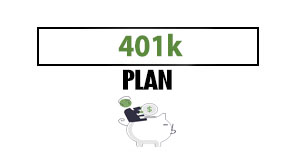The Three Sources of Retirement Income
Pension funds make up just one of three sources that retirees depend on for their income. The other two sources are Social Security and savings.
According to a report from the National Institute on Retirement Security, however, less than seven percent of Americans receive money from all three of those sources. More than 40 percent rely on Social Security alone. Depending on Social Security alone is a bad idea.
On average, Social Security replaces just 40 percent of pre-retirement income.
That means that without a pension or a 401(k), someone who depends on social security alone will be retiring with a 60 percent pay cut. Ideally, you want to be able to enjoy at least 70 percent of your income when the time comes to retire. Having 70 percent that you can depend on for your expenses certainly won’t happen if you’re relying entirely on Social Security.
The Problem with Saving for Retirement
You know and understand that you won’t want to rely entirely on your Social Security payments to see you through your retirement.
You could depend on your savings, but your ability to rely entirely on your savings depends on the amount you’re able to put away and where you put it. Build up a portfolio of real estate investments, for example, and you might find that you’re able to retire comfortably on your rental income alone.
Your managed portfolio approach will give you control. Put money into a pension fund, and you’re unlikely to know where your money will be invested. You’ll depend on the pension fund’s managers to decide where to invest and which bonds to buy. You’ll have to trust the pension fund with your retirement income.
Saving the money and investing it yourself makes you responsible for your future. You won’t be dependent on someone else for your retirement.
Even if you have the skill to invest your money wisely and believe that you can make smarter investments than a professional investor, you won’t be doing saving your money on a tax-deferred basis.
If you only have savings at retirement — you’ll be starting at a disadvantage. You’ll first have to pay tax on the money as you withdraw it, so you’ll be starting with less. You’ll then have to beat the pension fund’s returns and to out ahead.
There is always a good reason to have savings — but you don’t want to rely on that money alone. But saving your money and investing it yourself shouldn’t be a replacement for putting money in a pension fund. Placing funds in your pension plan and retirement fund is something you will want to do in addition to putting money in savings.
You will want to be enjoying the control and the flexibility that comes with managing your own savings. And you should also be enjoying the tax benefits that come with putting money into a retirement plan.
Are employers required to provide a pension plan?
Unfortunately, the answer is no. It’s voluntary for your employer to offer a pension plan. But at this time, most employers still offer a pension plan.
Even worse? Some studies are predicting that pensions will become extinct. As of 2018, only around 17 percent of companies are still offering a traditional pension plan.
Do employers even still offer pensions? How does a Pension Plan Work with employers?
There is good news, however. You can still find a job that does offer traditional pension plans.
“Traditional pensions are slowly disappearing, but they’re still widespread among government workers,” says Richard Johnson, director of the program on retirement policy at the Urban Institute.“The federal government and most state and local governments provide traditional pension coverage to their employees, although the benefits have become less generous in recent years.”
These traditional pension plan jobs also include:
- Primary, secondary, and special education teachers
- College and university instructors
- Members of the protective service, such as police and firefighters
- Those employed working with natural resources, construction, and maintenance
- Government workers involved in health care and social assistance
Besides government employees, unionized workers are the other group of employees that still predominantly receive pensions. “For private-sector unionized workers, our research has shown a high concentration in the construction, manufacturing, transportation, retail trade, and service industries,” says Caroline Crawford, assistant director of state and local research at the Center for Retirement Research at Boston College.
“In the private sector, traditional pensions are still common among large, unionized employers, but they are almost unheard of in small employers,” Johnson says. And while small businesses rarely do, organizations with five or fewer employees still do.
It’s also been found that the highest rate of traditional pension coverage takes place in the New England and Middle Atlantic regions.
- What is a pension plan?
- How does a Pension Plan Work?
- How a pension works
- The Move to Defined-Contributions
- Annuity
- Are pensions taxable?
- The Difference Between a Pension and a 401(k)
- The History of the Pension Plan
- The Link Between Your Pension and Your Job
- How to Find Old 401(k) and Pension Accounts
- Vesting Your Pension Funds
- It’s SEP to You
- Do You Really Need a Pension?
- How Much Should You Contribute to Your Pension Plan?
- How Much are You Allowed to Contribute a Pension Plan?
- Where’s My Money?
- Calculating the Value of Your Retirement Fund
- Common Causes of Errors in Pension Calculation
- Can I Tap My Pension Plan Early?
- Monthly Annuity or Lump Sum?
- Are There Any Risks Involved With Pensions?
- What Happens With My Pension When I Retire?
- What Happens to Your Pension if You Die?
- Can You Have a Pension and 401(k) and IRA?
- Final Retirement Tips





